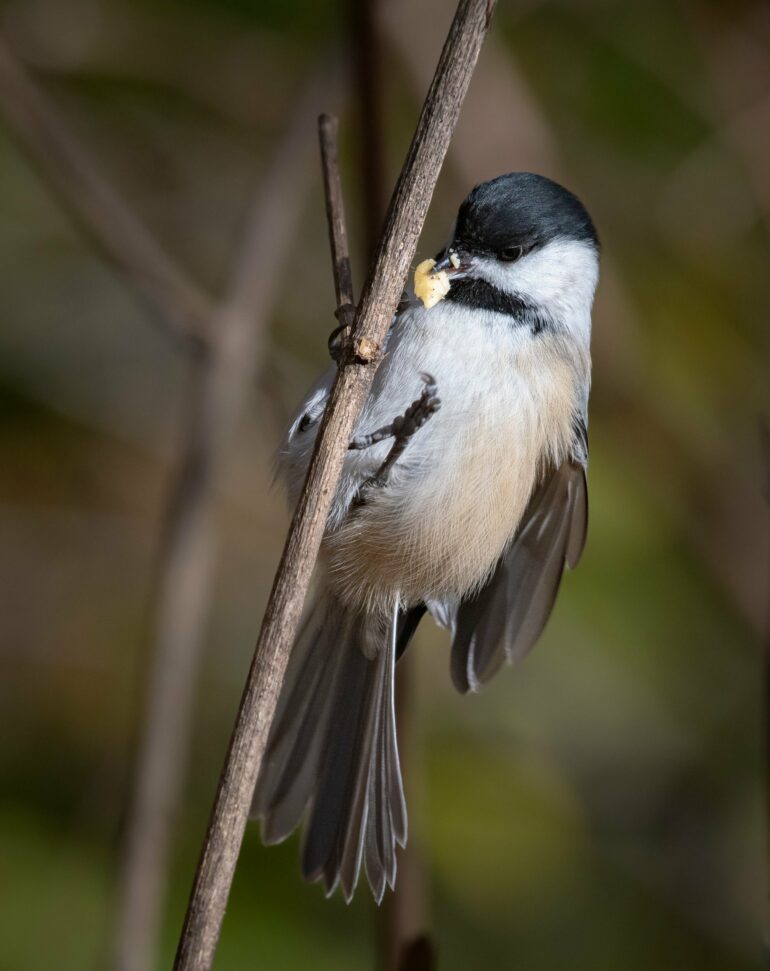Black-capped chickadees have extraordinary memories that can recall the locations of thousands of morsels of food to help them survive the winter. Now scientists at Columbia’s Zuckerman Institute have discovered how the chickadees can remember so many details: they memorize each food location using brain cell activity akin to a barcode. These new findings may shed light on how the brain creates memories for the events that make up our lives.
“We see the world through our memories of objects, places and people,” said Dmitriy Aronov, Ph.D., a principal investigator at Columbia’s Zuckerman Institute and an assistant professor of neuroscience at Columbia’s Vagelos College of Physicians and Surgeons.
“Memories entirely define the way we see and interact with the world. With this bird, we have a way to understand memory in an incredibly simplified way, and in understanding their memory, we will understand something about ourselves.”
This barcode-like formatting of memory, revealed for the first time in the journal Cell, may be a common tactic in animal brains, including those of humans.
“There are many findings in humans that are totally consistent with a barcode mechanism,” said postdoctoral research fellow Selmaan Chettih, Ph.D., the study’s co-first author along with Emily Mackevicius, Ph.D.
Chickadees are “memory geniuses,” said Dr. Aronov, the study’s corresponding author. They are masters of episodic memory—the brain’s ability to recall specific moments, such as stashing a bit of food away under tree bark or in a knothole. This can prove a matter of life or death for them, since unlike most birds that live in cold places, chickadees don’t migrate during the winter. This means their survival hinges on remembering where they hid food during warmer months, with some making up to 5,000 of these stashes per day.
Scientists have long known that these birds rely on the hippocampus–a brain structure critical for memory in all vertebrates, including humans–for storing memories of their caches. However, no one had identified the specific neural activity in the hippocampus that encodes episodic memories such as food-caching events.
“The question we’re trying to answer is, ‘What physically is a memory?'” Dr. Chettih said.
Chickadees may help scientists unlock this mystery. To explore the prodigious memories of chickadees, Dr. Aronov and his team built indoor arenas inspired by the birds’ natural habitats.
“Scientists have marveled at the memory of these birds for decades, but what has been a mystery is what was going on in their brains to support these memories,” said Dr. Aronov. “Now we have neural recording and behavior tracking tools at our disposal to advance our knowledge of how these birds are capable of these feats of memory.”
In typical experiments, a black-capped chickadee instinctively hides sunflower seeds in holes in the arenas as the researchers monitor activity in the hippocampus. Meanwhile, six cameras also record the birds as they flit about, with an artificial intelligence system automatically tracking them as they stash and retrieve seeds.
The scientists unexpectedly found that each time a chickadee stashed a seed, hippocampal neurons fired in a unique pattern. These fleeting patterns reactivated when the birds


